
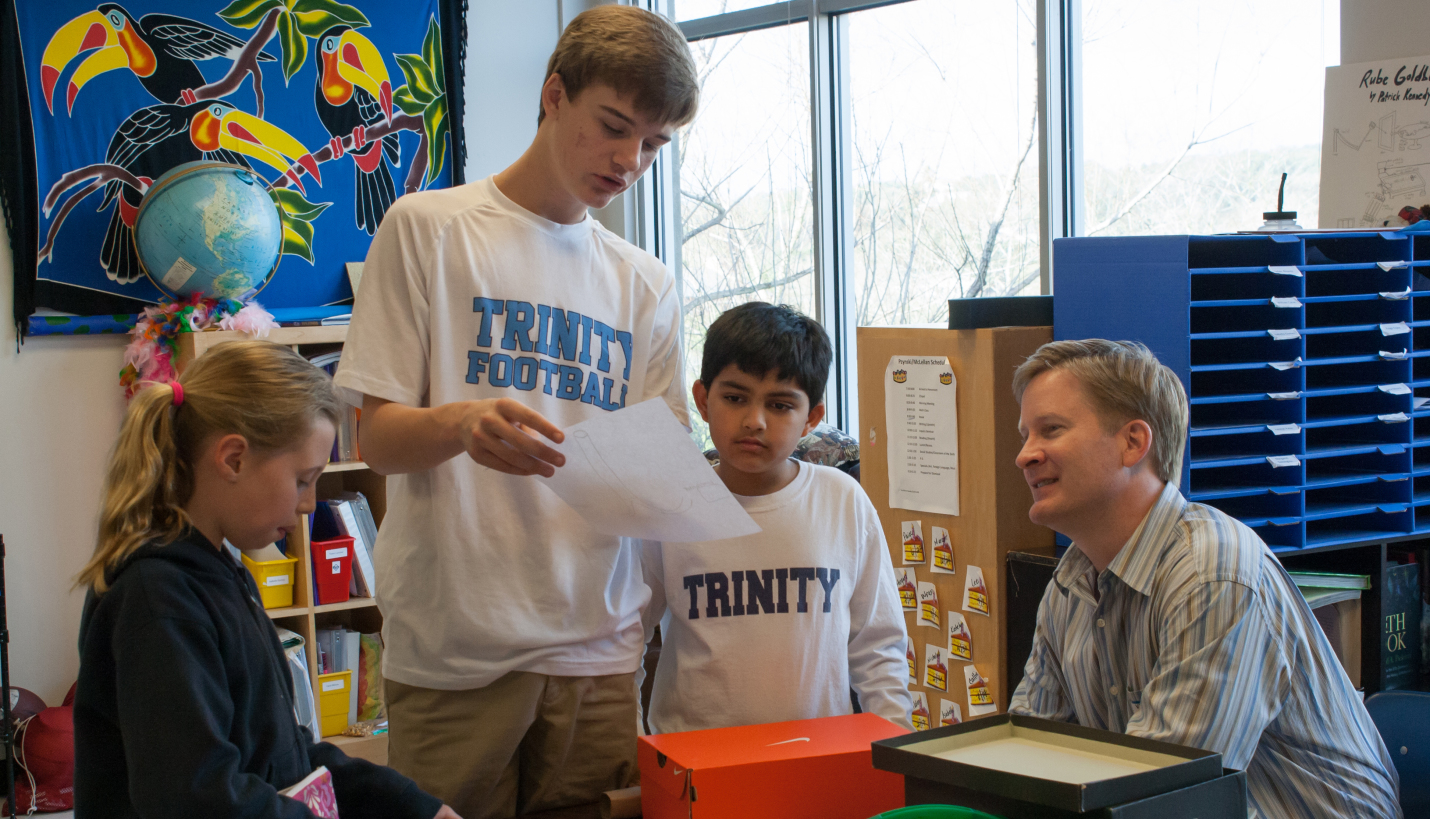
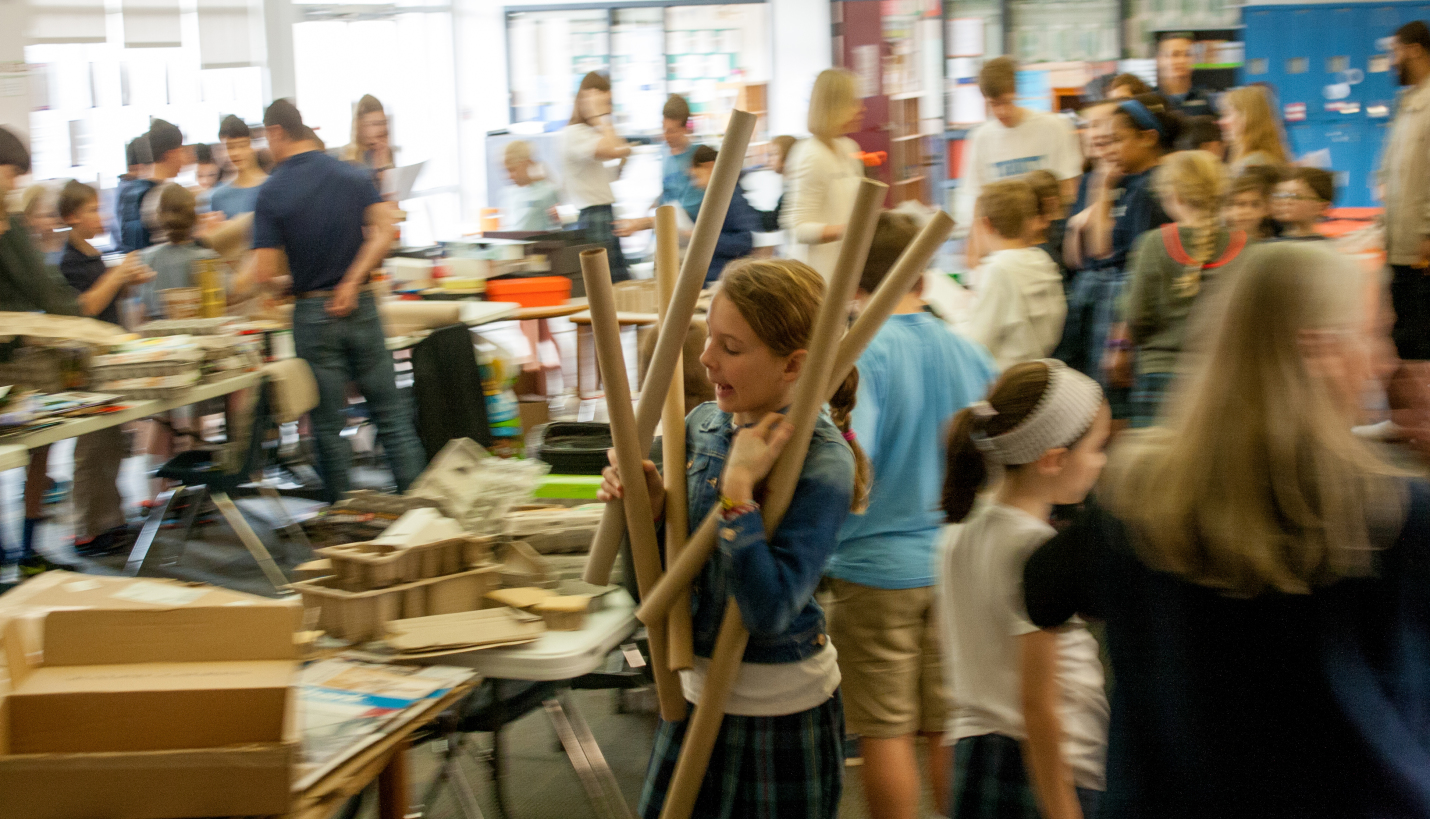
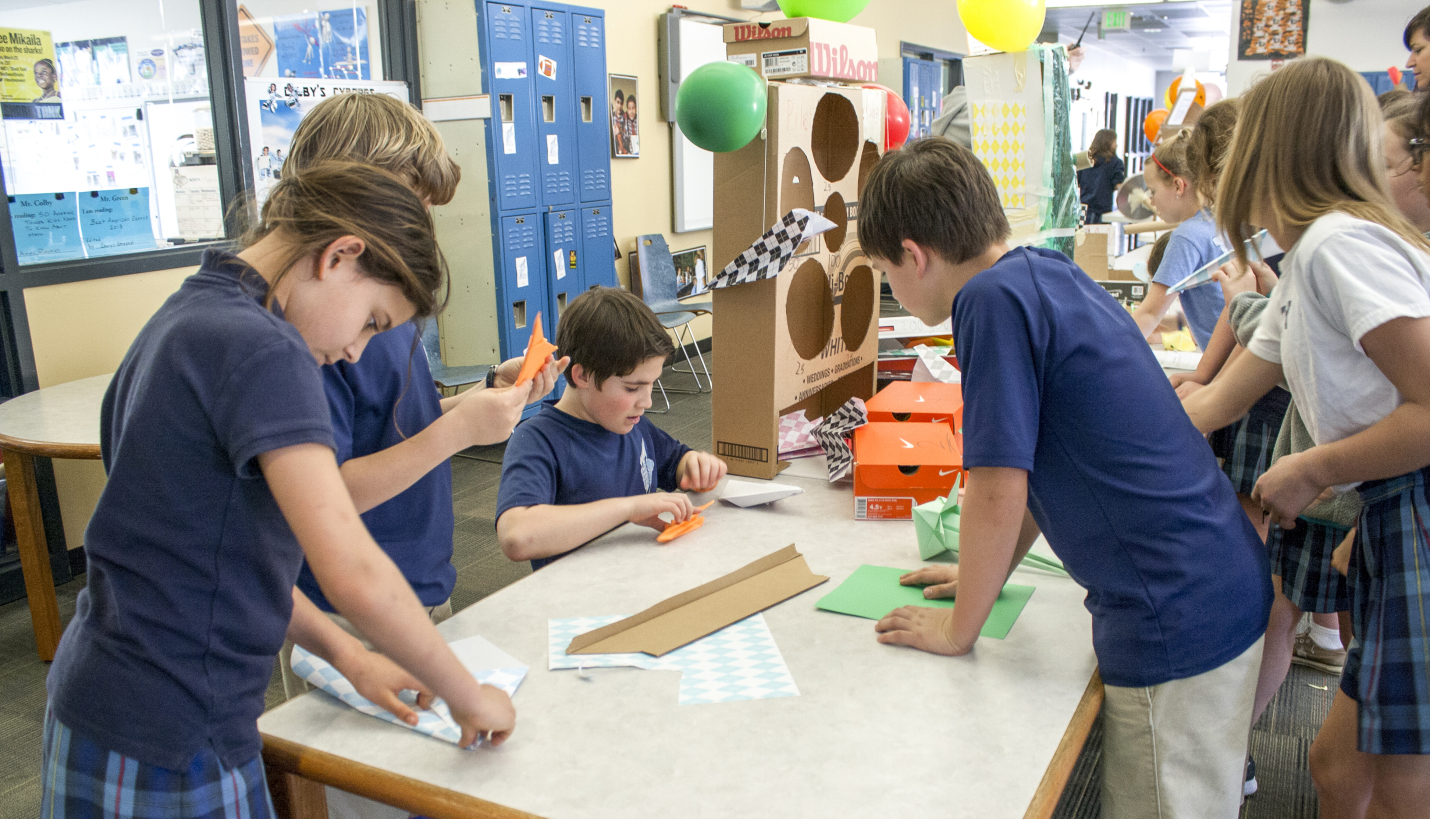
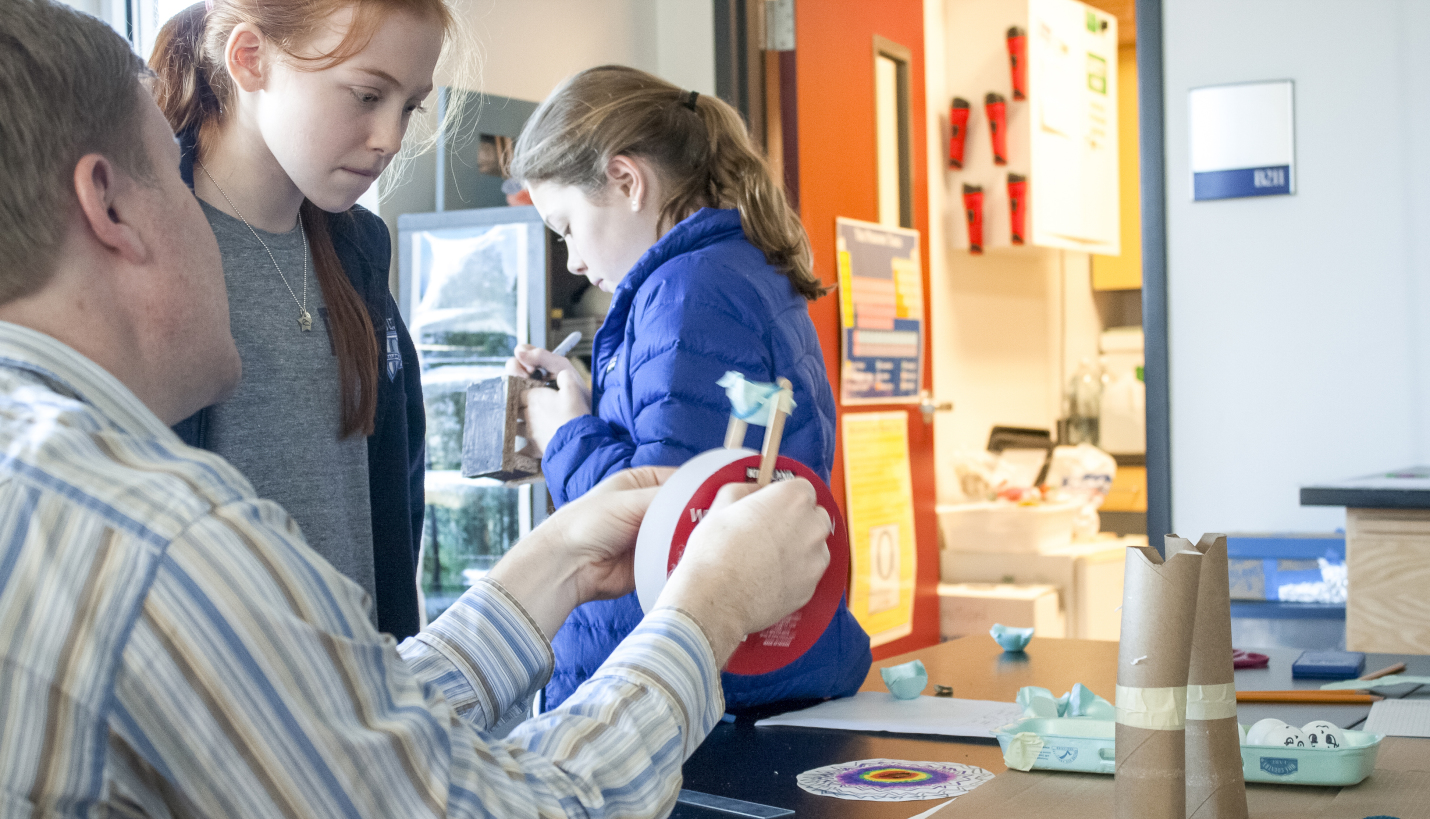


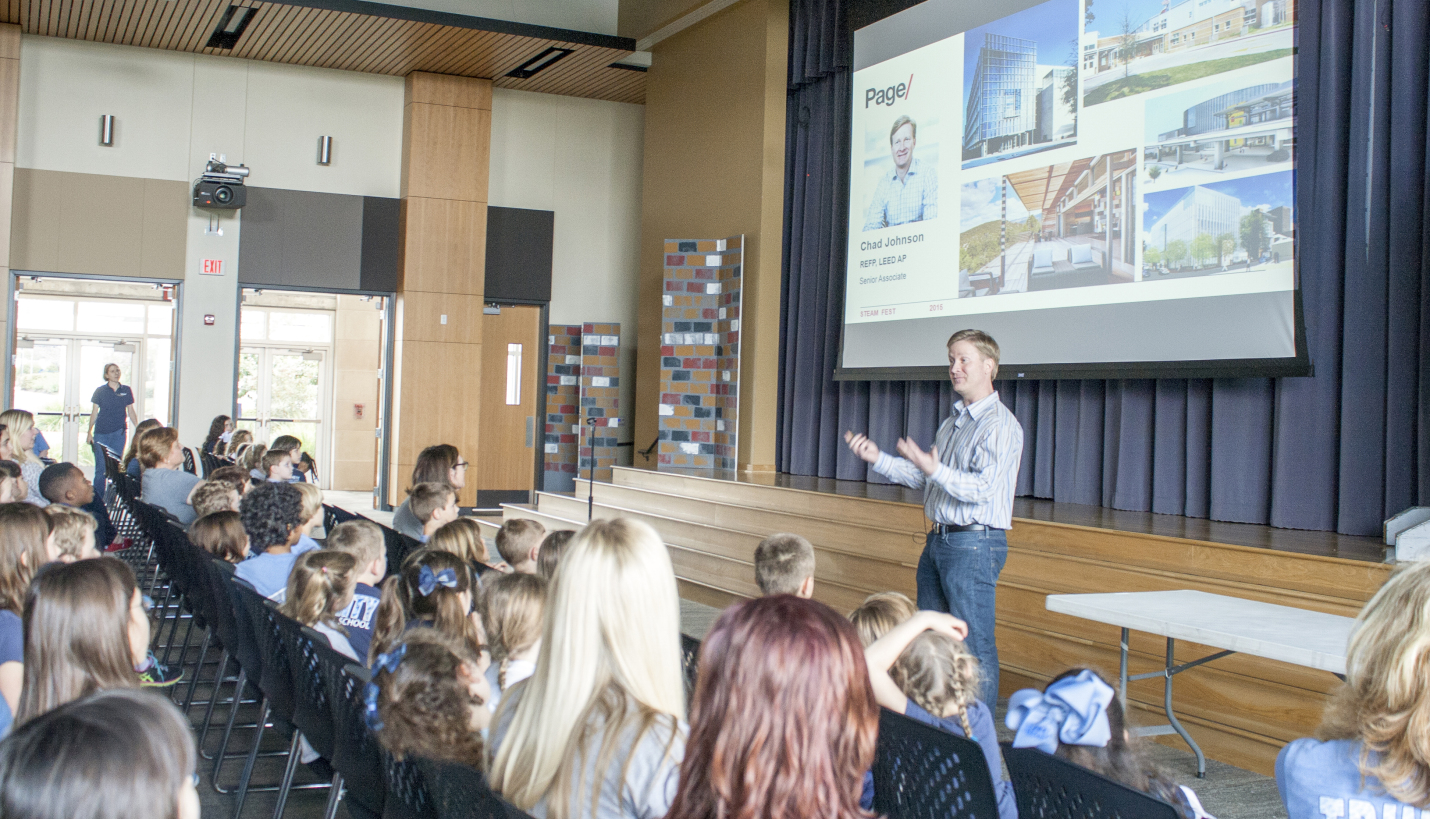
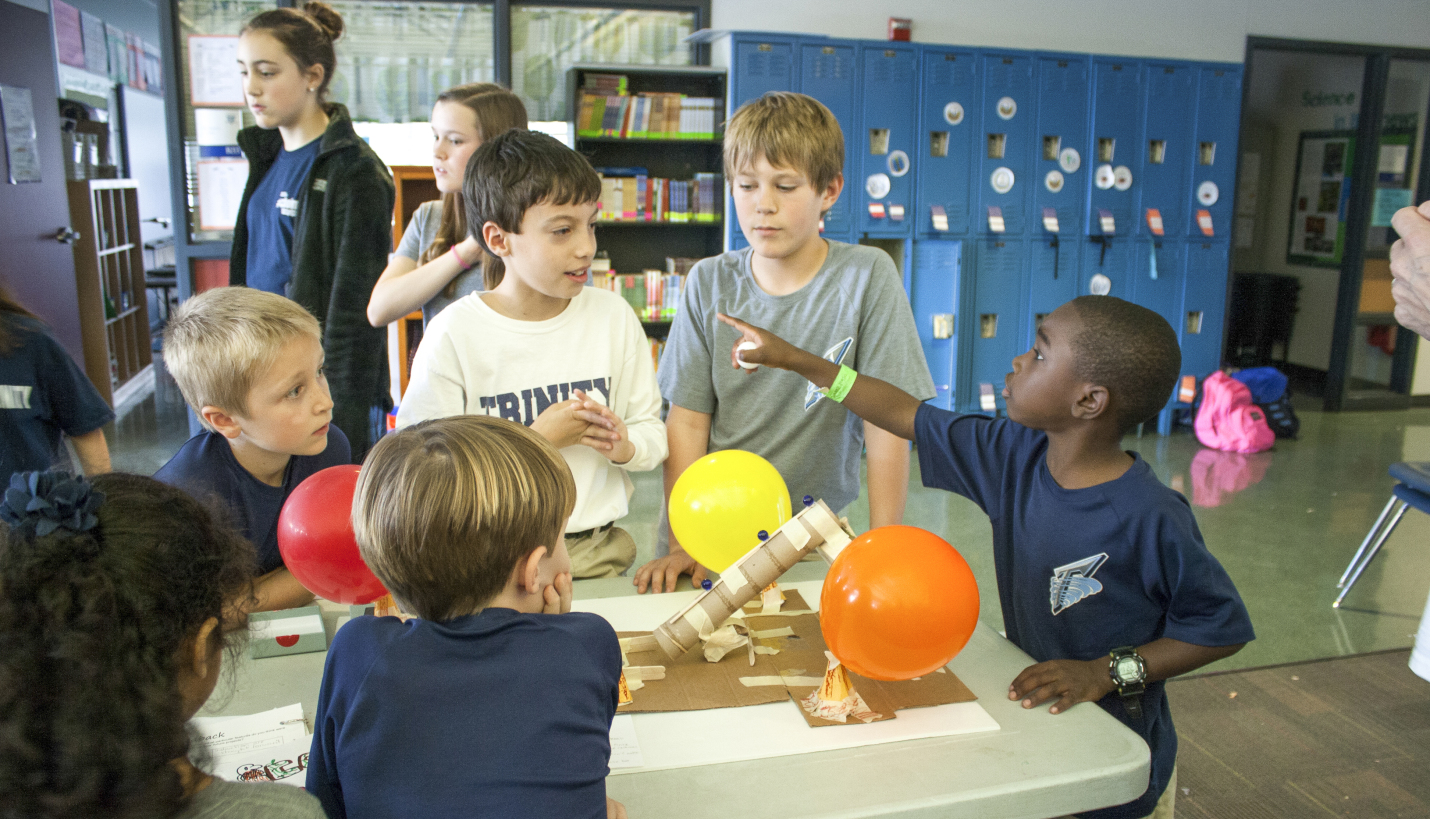

Making STEAM Come Alive For Students
School transformation calls for innovation and evolving learning models that encourage students to take a role in their education. Shifting the classroom paradigm from an audience of passive students to one of engaged learners, immersed students are in authentic activities that call upon them to become engineers, computer programmers, mathematicians, or scientists for the day and perhaps discover their life’s calling.
Educational models that encourage learners to ask questions and to work through problems, to find their own solutions and discover their learning potential, pave the way for cultivating a society of innovators. One of these models, STEAM, blends sciences, technology, engineering, art and math for integrated and collaborative learning experiences. This evolution in instruction calls for the transformation of the learning space itself.
Chad Johnson, project designer at Page, led the architectural teams on the Trinity Episcopal School campus over the past ten years of phased implementation, growing a PK-3 school for 200 students to a PK-8 campus of 540. Chad expanded the architectural design approach to create active learning spaces as well as express the building components as a tool for learning.
Trinity is just one of many academic projects at Page where architecture supports experiential STEAM learning. Chad also participated in Trinity’s STEAMFest 2015 – a celebration of innovation and problem solving where he shared his own passion for architecture and the design process and assisted the students in their creative play.
07/22/2015
People
Related Posts
- Breaking Down Barriers for Young Women in STEM
- Masonry and the Patient Experience in Healthcare Facilities
- We Are Girls: Encouraging The Next Generation
- Major University System Approves Page Campus Master Plan
- Celebrating The Newest Houston Methodist Hospital In The Woodlands
- We Are Girls: Encouraging Future Architects
- Mid-Century Merges with Contemporary Design








